In today’s competitive insurance landscape, integrating Customer Relationship Management (CRM) systems with claims management software is revolutionizing how insurers operate. This powerful combination enhances customer service, streamlines processes, and boosts operational efficiency.
Integrating CRM systems with claims management software enables insurers to centralize customer data, automate workflows, and provide personalized service throughout the claims process. By unifying these essential tools, insurance companies can access comprehensive customer profiles, track claim progress in real-time, and identify opportunities for cross-selling or upselling.
The integration of CRM and claims management software also facilitates proactive risk management. Insurers can analyze patterns in claims data to identify potential fraud, implement preventive measures, and optimize their underwriting processes. This data-driven approach not only reduces costs but also improves the overall customer experience by expediting claim resolutions and maintaining consistent communication throughout the process.
Key Takeaways
- Integration enhances customer service and streamlines claims processing
- Unified systems provide comprehensive data for improved decision-making
- Proactive risk management and fraud detection capabilities are enhanced
Enhancing Customer Experience and Relationship Management
Integrating CRM systems with claims management software empowers insurers to deliver personalized, efficient service while gaining valuable customer insights. This integration transforms how insurers interact with policyholders and manage relationships throughout the claims process.
Building Trust through Personalized Interactions
CRM integration enables insurers to tailor communications and services to individual policyholders. Agents and brokers can access comprehensive customer profiles, including policy details, claim history, and preferences. This allows for more informed and empathetic interactions during the claims process.
Personalized touchpoints build trust and demonstrate that the insurer understands and values each customer’s unique needs. For example, an agent can proactively reach out to a policyholder with relevant policy updates based on recent life events recorded in the CRM.
CRM systems also facilitate consistent communication across multiple channels, ensuring a seamless experience whether customers interact via phone, email, or online portals.
Operational Benefits of CRM Integration
The integration of CRM and claims management systems streamlines workflows and improves operational efficiency. Automated data entry reduces errors and frees up staff time for higher-value tasks like customer service and complex claim resolution.
Key benefits include:
- Centralized platform for managing customer information and claims
- Automated workflows for routine tasks
- Improved task management and prioritization
- Enhanced communication between departments

These efficiencies translate to faster claims processing times and more responsive customer service. Insurers can handle a higher volume of claims without sacrificing quality or personalization.
Leveraging Data for Customer Insight
CRM integration provides insurers with a wealth of data to drive strategic decisions and improve customer experiences. Advanced analytics tools can process this data to uncover trends, predict customer needs, and identify opportunities for proactive service.
Insurers can use these insights to:
- Develop targeted marketing campaigns
- Identify at-risk customers for retention efforts
- Optimize product offerings based on customer preferences
- Improve fraud detection through pattern recognition
By leveraging data-driven insights, insurers can anticipate customer needs and deliver more value throughout the policyholder lifecycle. This proactive approach enhances customer loyalty and positions the insurer as a trusted partner in risk management.
Streamlining Claims Management and Compliance
Integrating CRM systems with claims management software enhances efficiency and compliance for insurers. This combination streamlines workflows, reduces errors, and improves fraud detection capabilities.
Improving Claims Processing with Automation
Automated workflows significantly accelerate claims processing. Claims management systems can automatically route claims to appropriate adjusters based on predefined criteria. This reduces manual intervention and speeds up the overall process.
Real-time updates keep all stakeholders informed throughout the claims lifecycle. Automated notifications alert claimants, adjusters, and other relevant parties about claim status changes or required actions.
Streamlined workflows minimize errors and improve accuracy. By reducing manual data entry, insurers can decrease mistakes that often lead to delays or incorrect payouts.
Fraud detection algorithms analyze claim patterns and flag suspicious activities. This helps insurers identify potential fraudulent claims more quickly and accurately, reducing financial losses.

Enhanced security measures protect sensitive claim information. Integrated systems often include robust data encryption and access controls to safeguard policyholder data.
Scalability allows insurers to handle increased claim volumes efficiently. Cloud-based solutions can easily adapt to growing workloads without significant infrastructure investments.
Conclusion
Integrating CRM systems with claims management software provides significant advantages for insurers. This powerful combination enhances operational efficiency, improves customer satisfaction, and drives business growth. By centralizing data and streamlining processes, insurers can make more informed decisions and deliver personalized services.
The integration empowers insurance companies to adapt quickly to market changes and customer needs. It ultimately leads to increased profitability and a stronger competitive position in the insurance industry.
